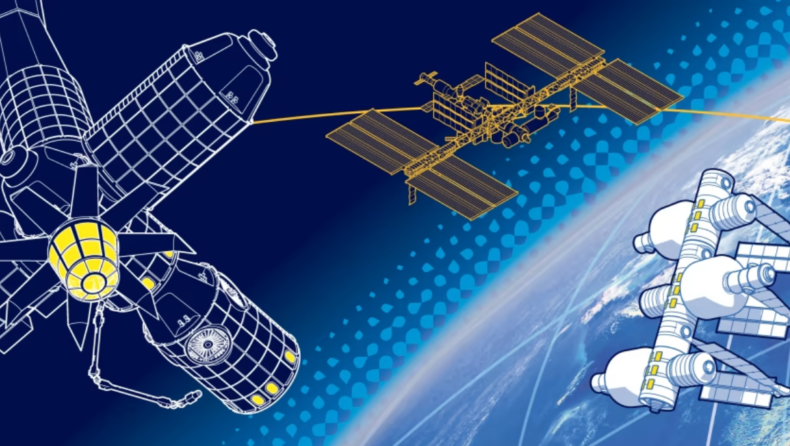The ISS was the first global technology collaboration. During 22 years of continuous habitation, it hosted 258 astronauts and cosmonauts from 20 countries.
LambdaVision, a biotech company in Connecticut, received a package from space in August. Inside the shoebox-sized package were samples of a protein-based film that the company hopes will one day be the basis of an artificial retina to restore sight to the blind.
Microgravity on the International Space Station allowed LambdaVision to create more consistent and even protein layers. LambdaVision’s CEO, Nicole Wagner, believes the company could mass-produce retinas on commercial space stations in a few years.
Continued work in microgravity holds promise, she says. “But ISS is a lab.” Commercial space stations will improve. They’ll be future-proof.
The race to shape the future is on. Jeff Bezos’ Blue Origin, Sierra Space, Northrop Grumman, Axiom Space, Lockheed Martin, and Nanoracks are competing to design privately owned replacements for the ISS when it’s decommissioned by the end of the decade.
Four initial contracts have been awarded, and the winner, or winners, could expect $1bn in annual revenues from Nasa to deliver space station services in 2025.
The competitors hope to become the go-to platform for a rapidly emerging space economy in research, manufacturing, tourism, and entertainment.
The ISS was the first global technology collaboration. During 22 years of continuous habitation, it hosted 258 astronauts and cosmonauts from 20 countries. Nasa told Congress earlier this year that research on the ISS spanned all major scientific disciplines.
Space station work helped develop cancer, Alzheimer’s, and Duchenne muscular dystrophy drugs. Space-based research has improved household goods like fabric softeners, leading to three patents from Procter & Gamble.
Back on Earth, cost considerations and geopolitical tensions are making it harder to sustain the international collaboration between five space agencies (US, Russia, EU, Canada, and Japan) that have kept the space station aloft far longer than intended.
The ISS has cost more than $159bn over its lifetime and $3bn a year to operate, one-third of Nasa’s human space flight budget. Nasa says switching to commercial platforms could free up $1.8 billion a year by 2033 for space exploration.
Larger government agencies hope to save time and money by having commercial providers help maintain a presence in low Earth orbit, says Dhara Patel of the UK National Space Centre.













